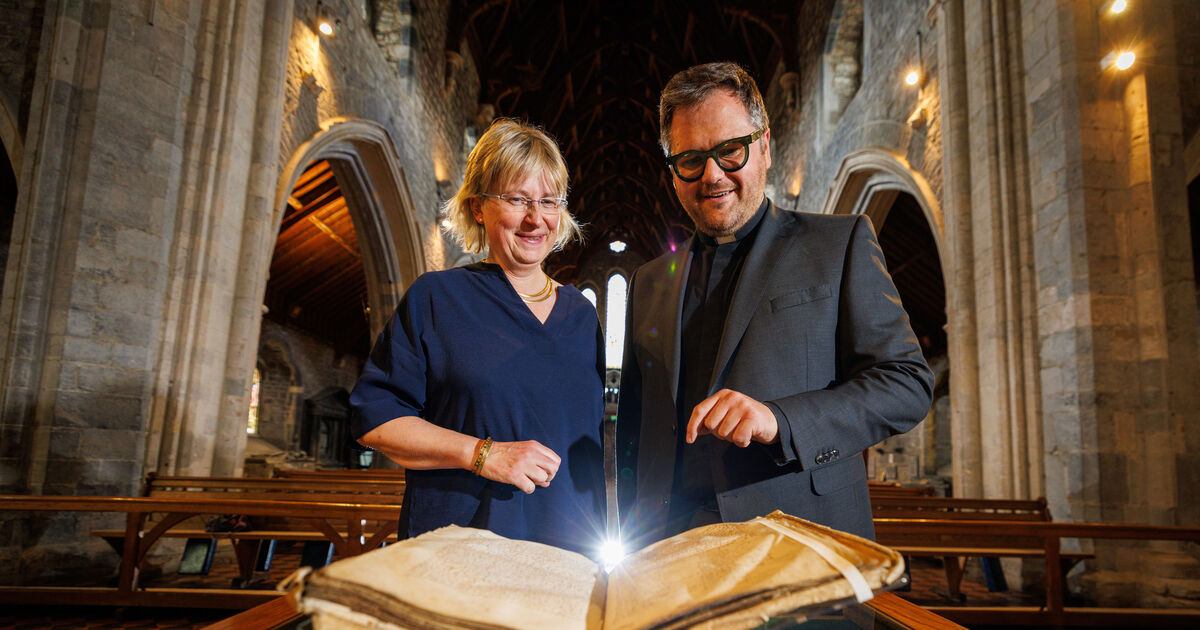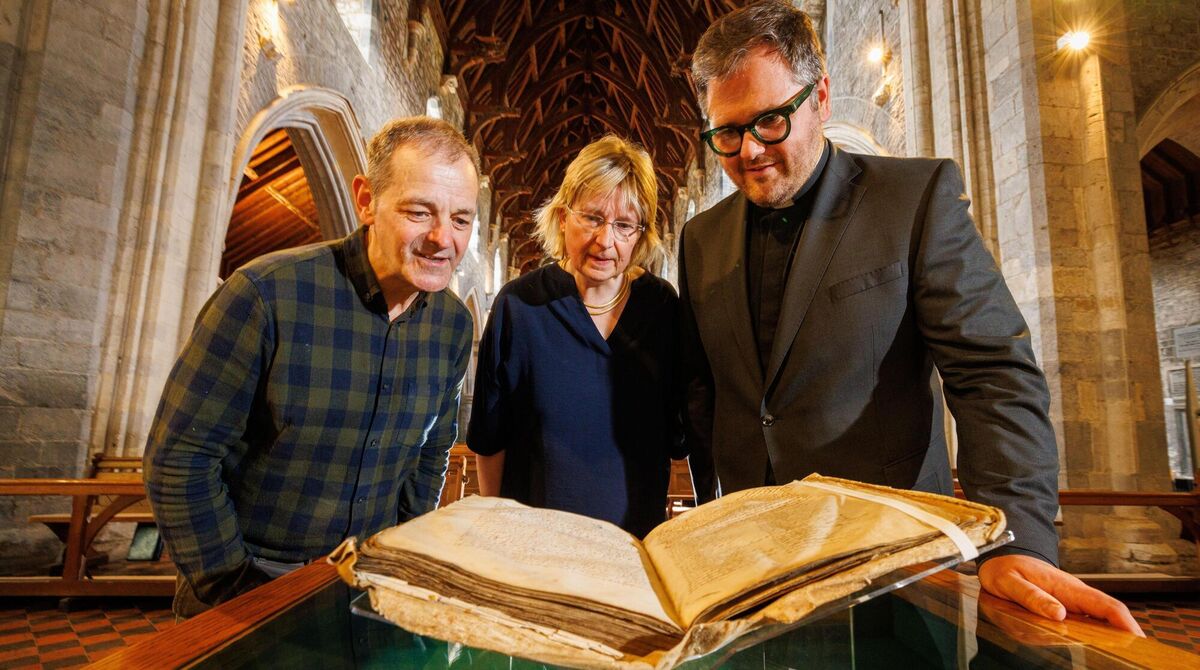
Few parts of Ireland have as rich a history as Kilkenny, and now one of its most important books is coming home.
— which goes on public display today in the city’s St Canice’s Cathedral for the first time in its 700-year history — is not only a window into how the area was run 700 years ago but contains one of the first recipes for making aqua vitae, better known to us as whiskey.
In an era ravaged by the Black Death, the humble amber liquid was put forward as a cure; so important was it that the bishop, Richard de Ledrede, saw fit to include it in his book because he deemed it so important for the greater good.
The bishop, who is buried in the cathedral which marks one end of the city’s medieval mile, lived through tumultuous times while he held the see from 1317 to 1360.
Indeed, he contributed to some of the tumult through a series of clashes and conflicts with the powerbroker of his day, as well as attempts to standardise and reform.
HISTORY HUB
If you are interested in this article then no doubt you will enjoy exploring the various history collections and content in our history hub. Check it out HERE and happy reading
He was a learned man — the Red Book contains about 60 hymns he wrote in Latin which he intended to replace songs sung in the vernacular in the cathedral that were more worldly than spiritual, which suggests a certain level of cultural and organisational conflict between the princes of the Church and its foot soldiers.
Ahead of the book’s arrival, exhibition organiser Dean Stephen Farrell said: “He [Ledrede] was amazed that the vicar’s choral was singing songs that they picked up in the local taverns, so he wrote Latin hymns and set them to the tunes that were sung in the pubs.”
I like to think of this as being like a monastic choir belting out Nicki Minaj but I suspect the songs were a bit more low-brow. Either way, it shows he was up against it.

Ledrede was not a man who preferred the milk of simpler teaching when it came to dogma and ecclesiastical politics. Although, as a medieval historian, I can tell you that this makes him part of the majority. And as somebody who’s been through organisational change over the years, I can tell you that change seldom goes easily.
He was described by historian Richard Greene as a “scourge of witches and heretics”, and he was possibly at Europe’s first witch trial when he accused Alice Kyteler and her son of witchcraft and heresy, for which they were tried in 1324. For this, Ledrede ended up briefly in prison, while Alice, who had a series of wealthy husbands who died, eventually escaped, presumably through the aid of her brother-in-law, who happened to be one of the highest officials in the country.
Ledrede did, however, secure (through torture) the confession and execution of one of Kyteler’s servants, Petronella.
Even allowing for his contentious nature, he was a landmark figure in the history of the city and there is something very sobering in realising that he survived the Black Death’s arrival in Ireland in the late 1340s. It’s comparable to somebody researching their family history and realising how their direct ancestor lived through the Famine but his or her siblings did not.
The Red Book is not just hymns and whiskey. It includes some copied extracts from the Magna Carta, while it also includes complaints from King Edward III (who later tried to get Ledrede replaced) that English settlers in Ireland had, well, integrated a bit too closely.
We are, I imagine, all familiar with how the Norman lords became “more Irish than the Irish themselves” in terms of assimilating into Gaelic culture, a process which ultimately led to attempts to suppress them militarily through Edward’s son and culminated in the Statutes of Kilkenny in 1366. These, among other things, forbade the marriage of English settlers with the Irish and banned the English from playing hurling, perhaps ironic given how Kilkenny went on for so long to dominate the sport.
It is quite amazing to realise that the hand and mind behind the Red Book was present for much of this cultural exchange and conflict, even if he was not there for the statutes (which failed anyway).

The arrival of the Red Book enhances the city’s already impressive historical heritage, in particular the medieval mile that runs from St Canice’s Cathedral all the way to Kilkenny Castle (already one of my
favourite places because I proposed to my now wife on the steps there).
Visitors to the Red Book exhibition would find a visit to the Medieval Mile Museum a fitting counterpart, not just for the early medieval tombs and gravestones — including the very poignant three skeletons ranging in age from 12 to 45 — but for some document snapshots of the city’s storied past. They include a document showing the wages paid to the cathedral organist in 1580 and efforts to stop women from selling bread in the 1700s because they were not part of a baking guild.
The Red Book exhibition runs from today in the cathedral named for the saint who gave her name to the city itself. Various pages from the book will be viewable at different points throughout the year, with the leaves turned every 12 weeks.
Tickets to The Red Book Exhibition are included in admission to St Canice’s Cathedral from €6.50. See stcanicescathedral.ie
- David O’Mahony is assistant editor and a historian.






